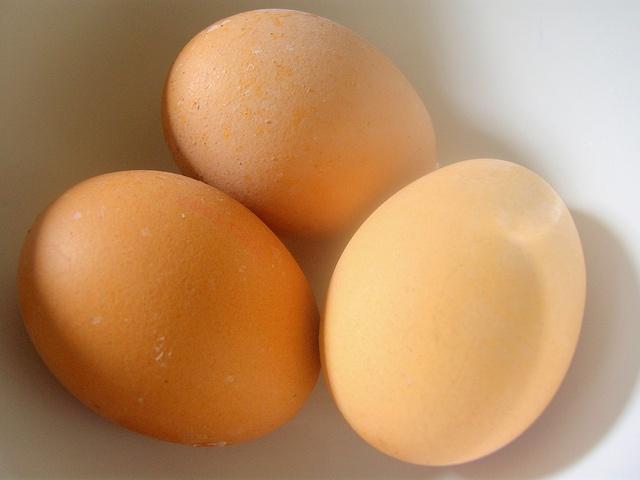
Glyphosate is the most widely used herbicide in the world. It is the active ingredient in Roundup, which was released by Monsanto in 1974. Its use is “widely associated” with crops that are genetically modified to resist it.
But glyphosate comes with health concerns. Last year, the World Health Organization’s International Agency for Research on Cancer (IARC) classified glyphosate as a probable human carcinogen. In September, the state of California announced its intention to add glyphosate to its list of chemicals known to cause cancer under the Safe Drinking Water and Toxic Enforcement Act of 1986, more commonly known as Proposition 65.
With that in mind, here comes some disturbing news: Glyphosate residues are “widely distributed” in breakfast foods such as bagels, breakfast cereals and eggs, according to a new report from the Alliance for Natural Health USA (ANH-USA). Tim Reihm, director of communications and outreach for ANH-USA, told TriplePundit that the intent of the study was to see how widespread the problem is. “We think this test demonstrates how wide this problem has become,” he said.
The U.S. Food and Drug Administration will begin testing for glyphosate residues this year on some foods, mostly soybeans and corn. The ANH decided to take the proverbial bull by the horns and began testing for residues on 12 popular breakfast foods and breakfast food ingredients, totaling 24 items tested. The categories tested included flour, corn flakes, instant oatmeal, bagels, yogurt, bread, frozen hash browns, potatoes, cream of wheat, eggs, and non-dairy and dairy-based coffee creamers. The tests were done by an independent laboratory using the enzyme-linked immunosorbent assay (ELISA) test.
"Essentially, we contracted to do this report because we really were curious as to how ubiquitous glyphosate has become, and it seemed a good idea to look at breakfast foods,” Reihm said. “We all eat breakfast and breakfast seemed like a good meal to analyze. So, we really tried to take common breakfast foods, randomly picking them from the store shelves."
The levels of glyphosate found in the majority of samples were below the U.S. Environmental Protection Agency’s (EPA) allowable daily intake (ADI). However, the allowable amount itself presents a problem, according to the report, because it fails to consider the recent evidence that glyphosate is a probable carcinogen or how widely distributed the herbicide is in food and water. The EPA’s ADI is currently set at 1.75 milligrams (mg) per kilograms (kg) of body weight per day, while the EU’s is only 0.3 mg per kg of body weight, which is almost six times lower.
Critics say that the U.S. safety levels, developed on adult laboratory animals, may not be accurate because glyphosate may be an endocrine disrupter, and if so, that would affect hormone levels and produce different effects at various stages of human development. Critics also contend that the safety tests were conducted in isolation and failed to include commercial pesticide formulations that may contain other toxic ingredients that may intensify the toxicity of glyphosate.
The tests found that 10 of foods tested contained detectable glyphosate residues above 75 parts per billion (ppb); 75 ppb is equivalent of 75 mg of glyphosate per liter of testing solution, which is “well below” the ADI. One surprising food item tested, organic cage-free eggs, contained more glyphosate than EPA levels allow.
Here’s a list of 10 tested items and their levels of glyphosate (in parts per billion):
- Quaker Instant Oatmeal, Strawberries and Cream: 1327.1 ppb
- Thomas Whole Wheat Bagels: 491.9 ppb
- Rudio Multibagls: 151.5 ppb
- Pepperidge Farm Wholegrain Bread, 100% Whole Wheat: 403 ppb
- Dave’s Killer Whole Wheat Bread: 136.4 ppb
- Cream of Wheat Hot Cereal Whole Grain: 260.6 ppb
- Large eggs: 102 ppb
- Organic, cage-free, antibiotic-free large eggs: 169 ppb
- 365 Coffee Creamer: 104 ppb
- Original Silk Soy Creamer Non GMO: 86 ppb
“The results actually kind of stunned us, quite frankly. I think we expected to see some residues, corn and soy for example,” Reihm explained. “We weren’t expecting to see it on things like dairy and eggs, as there is no direct application of glyphosate in the production of those foods.”
The report suggests that Americans are likely eating foods containing glyphosate residues on a daily basis. The major concern is that they are showing up in foods such as dairy and eggs, animal products not sprayed with the herbicide. That suggests that glyphosate is entering the food chain and then building up in the tissue of animals, which is known as bioaccumlulation. The ANH is concerned that if the herbicide can accumulate in animals, it may accumulate in humans.
What the ANH hopes comes from the study is that regulators will take another look at the issue and do further studies on glyphosate. “There are a number of things the public needs to be aware of, that the government is allowing companies to do without proper testing," Reihm said.
Image credit: Flickr/James Bowe

Gina-Marie is a freelance writer and journalist armed with a degree in journalism, and a passion for social justice, including the environment and sustainability. She writes for various websites, and has made the 75+ Environmentalists to Follow list by Mashable.com.














